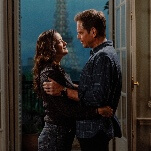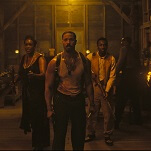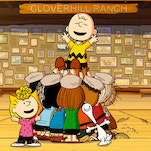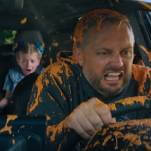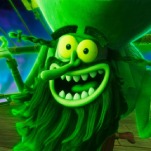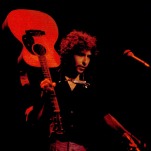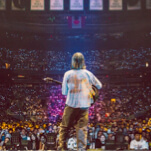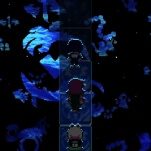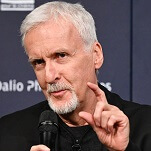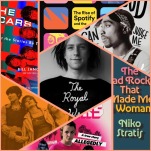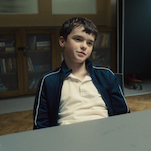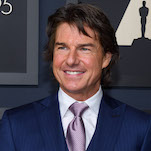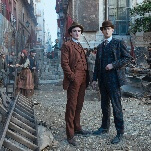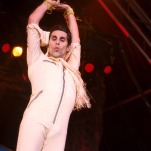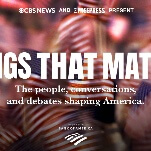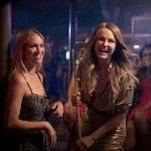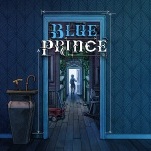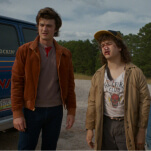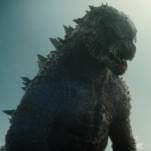Vertigo is as good a choice as any to dethrone Kane—vibrant, seductive, and mysterious, capable of turning viewers into romantic obsessives of the Jimmy Stewart variety—but the other story coming out of the 2012 poll is how little things had changed, despite a dramatic 10 years’ worth of changes in the critical profession and a voting roster nearly six times larger than the previous edition. Only three films exited the list: Battleship Potemkin, Singin’ In The Rain, and The Godfather/The Godfather Part II, the latter of which is explained by Sight & Sound’s (correct) decision not to allow voters to bundle the two films together. (On the Top 50, The Godfather dropped to No. 21 and The Godfather Part II fell to No. 31, suggesting that it might take years for critics to coalesce around one or the other. This has been Jean-Luc Godard’s problem for years—he’s a major figure, but no one can agree on which film to stand behind, so he has an astonishing four in the Top 50, with Breathless closest to breaking through to the Top 10.) Two of the three newcomers have placed in the past: The Searchers and The Passion Of Joan Of Arc. That leaves Dziga Vertov’s 1929 experimental film Man With A Movie Camera as the sole surprise on the list, and a wonderful choice for reasons I’ll get to later.
The knock on the Sight & Sound poll is that it’s stodgy. The baby on the list is Stanley Kubrick’s 2001: A Space Odyssey, which was made 44 years ago. Despite a shuffling in the order, most of the films on the list have been there for decades or at least hovered in and around the Top 10 for a long time, shutting the door on contemporary masters or unheralded classics that would presumably breathe new life into the list. Only two films from the 21st century broke into the Top 50—Wong Kar-wai’s In The Mood For Love (No. 24) and David Lynch’s Mulholland Drive (No. 28)—but the youngest film to even threaten the Top 10 is 1979’s Apocalypse Now at No. 14, and it’s pretty clear that the tectonic shifts that move titles around the list happen slowly. Add to that the precipitous fall of Singin’ In The Rain—the one example of Hollywood craft at its brightest and most accessible—from No. 10 to No. 20, and you have all the exhibits for your argument on the list’s obsolescence.
But that argument is wrong, for two seemingly contradictory reasons: The list should be stodgy, and the list isn’t stodgy in the least. The Sight & Sound Critics Poll isn’t just a poll, it’s the poll. Citizen Kane has been called the greatest film ever made because Sight & Sound said so, whether people knew the poll was being referenced or not. In other words, it is the closest equivalent cinema has to a literary canon. And just as bibliophiles often resist the canon, there’s always going to be some discontent over the scads of worthy titles missing from the list and endless discussions over what should be there instead. (Vertigo’s ascendancy immediately had people shouting out a dozen other Hitchcock films that should have replaced it.) But the stability of the Sight & Sound list is a big part of what gives it value: For film critics and historians—and would-be critics and casual historians—the poll is the compass pointing north, the absolute baseline for an education on the medium. Every critic who submitted a ballot deviated from the Top 10 either partially or wholly—just as any film fanatic heads down their own personal tributaries—but the consensus of the many has given the study of film a useful foundation. A radically altered Sight & Sound list would be weak and destabilizing; breaking into the Top 10 should be slow and carefully considered. For now, just losing Citizen Kane is radical enough, like having to orbit around a different sun.
Now here’s the second point: Many of the films on this list are fucking crazy. If you can imagine yourself going back in time and seeing any of these films for the first time, nearly all of them are mini-revolutions, breaking so firmly with what people expected cinema to be that they were often misunderstood or hated. There’s nothing “stodgy” about The Rules Of The Game, which had to be removed and drastically re-edited due to mass outrage and a government ban. Tokyo Story and The Passion Of Joan Of Arc violate the most basic rules of how a film is supposed to be shot, the former by breaking “the 180-degree plane” and the latter by abandoning spatial relationships altogether. 2001: A Space Odyssey attempts nothing short of accounting for existence itself—and doesn’t even get to the space part until after a long prologue about a breakthrough in ape evolution. The Searchers remains an absolutely chilling rebuke to what we expect from John Wayne, John Ford, and the American Western itself. If you were to add, say, Pulp Fiction, to the list, that would be a relatively stodgy choice in this company, despite being a sensation in itself.
Which brings us to Man With A Movie Camera, the one true upstart on the 2012 list and maybe the smartest imaginable addition to the fray. Since its inception, the poll has championed films that have dramatically altered the landscape, but none that are truly avant-garde. Vertov’s 1929 experimental classic has been a touchstone for an entire subset of non-narrative films, and a primary source for understanding what the medium itself is capable of accomplishing. Vertov wanted to free cinema from the stage and from the strictures of storytelling itself—it has no intertitles, no characters, no plot, and more than 1,700 cuts—and he invites the viewer to think about how films are made and how they might be rearranged to new and exciting ends. The film is still astonishing, eternally—so, too, the rest of the films on the list.

